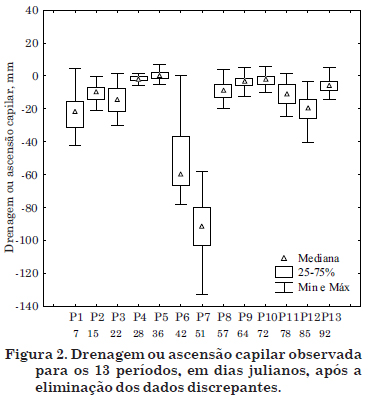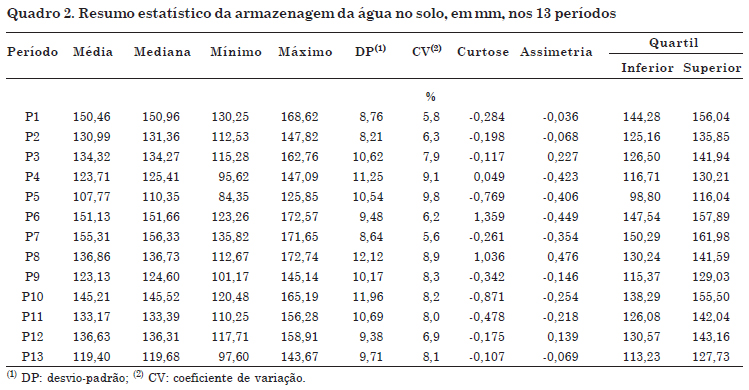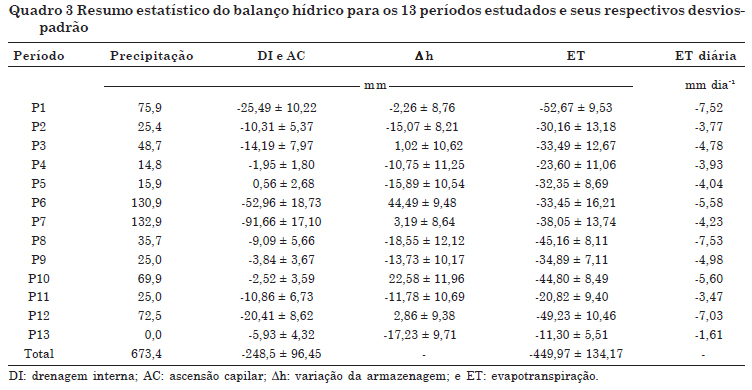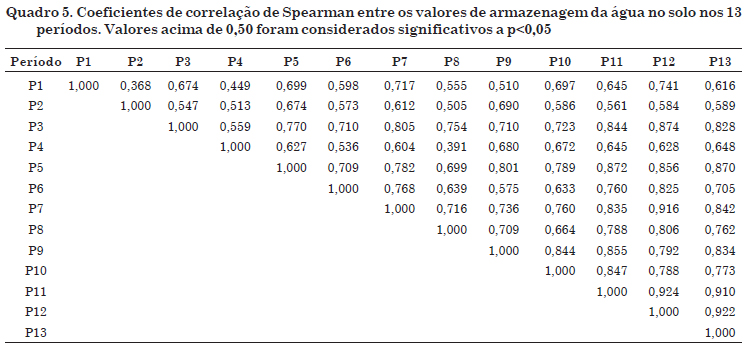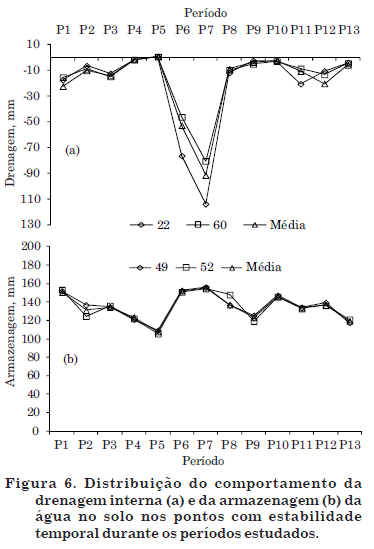Monitoring the variables that constitute the soil water balance equation in a farmed field is important for reliably evaluating water deficit periods during the crop cycle, managing irrigation and estimating nutrient losses through leaching. Components of the water balance equation may vary in space and time, and the study of the temporal stability of the spatial variability of these components is essential for determining the observation points in the field (sites) for monitoring soil moisture accurately with reduced effort in sampling. The aim of this study was to assess soil water balance components (specifically, soil water storage variation, internal drainage and actual evapotranspiration) of maize plants in an Oxisol and to analyze spatial and temporal variability by the temporal stability technique. The study was carried out in an area of the ESALQ/USP campus, in the municipality of Piracicaba, State of São Paulo, Brazil. The relief of the 1,500 m² experimental area is flat. A set of 60 aluminum tubes was set up in this area for neutron probe access as well as 120 mercury manometer tensiometers (60 at the 0.75 m soil depth and 60 at 0.85 m). This allowed estimation of soil water flux density at the 0.80 m soil depth by the Darcy-Buckingham equation and estimation of soil water storage in the 0.0-0.80 m layer throughout the crop cycle. Rainfall was measured by means of a rain gauge set up in the center of the experimental area, and actual evaporation was evaluated as the unknown factor of the soil water balance equation. The study was carried out by dividing the crop cycle into 13 periods (P1 to P13). Descriptive statistics were used to show the variation in data behavior after removal of outliers, which represented from 0.0 to 3.9 % of sampling points per period. Descriptive statistics were useful in showing the change in data behavior after removal of outliers and extremes in some periods. The temporal stability technique is viable for evaluation of water balance in space and time. The Spearman correlation coefficients in the periods indicated temporal stability for water storage regardless of the moisture content of the soil, but do not express reliability for assessment of internal drainage and actual crop evapotranspiration. Evapotranspiration varied over the crop cycle, remaining nearly constant in the P5 to P9 periods, when there was greater plant growth.
descriptive statistics; neutron probe; tensiometer; temporal stability



